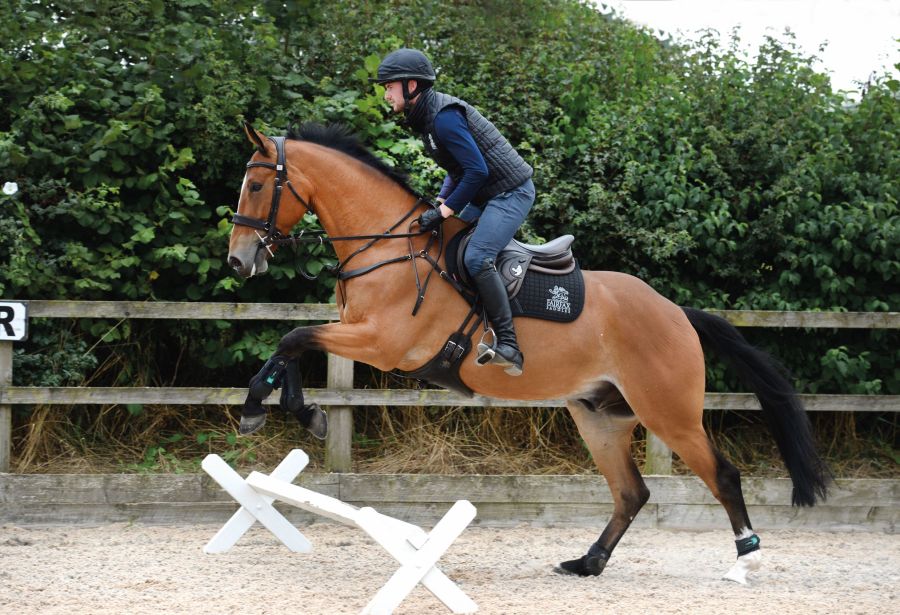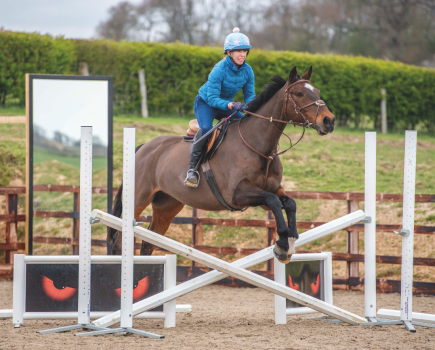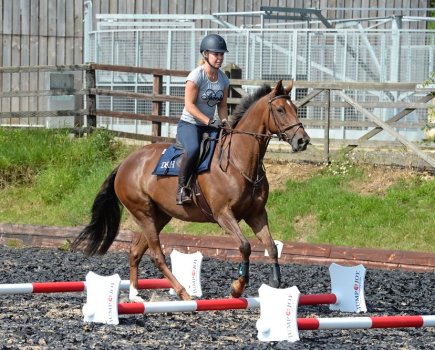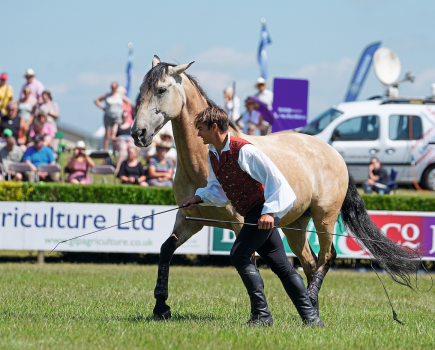Balance, rhythm and suppleness: these three simple concepts are the foundations of all training, especially when you leave the ground. Time spent developing them will arm you with a toolkit of skills that will make any technical lines or tricky distances a breeze when you hit the showjumping ring or cross-country course.
Top competition horse producer and event rider JP Sheffield is a master at getting the best out of every horse and rider combination. He explains how to become a more successful, confident partnership, and up your control and accuracy over fences.
Not sure how high to set your fences? JP says: “While you can use poles on the ground when you’re jump training, a small cross-pole or cavaletti is the preferred option as it will make you more disciplined on the approach. You — and your horse — will respect a small fence more than a pole.”
Exercise 1: Make every stride count
One of JP’s favourite training exercises is to place two fences six strides apart and count out loud the strides as you ride between them. Sounds simple but get the basics of rhythm and control nailed here and you’ll be well on the way to mastering more tricky distances in no time.
How to ride it:
- Simply place two fences (these can be cross-poles, cavalettis, poles on the ground or raised poles) six strides apart.
- Approach in canter, pop the first jump or pole, then count out loud with each stride as you ride to the next.
- Counting out loud will help you focus on your rhythm as you ride the six strides: aim to make everything as smooth and relaxed as possible.
- If you feel your horse is rushing or a little unbalanced on the approach, take a deep breath and calmly circle before the first element.
- Making the distance in seven strides, not six? Soften your hands and allow your horse forward.
- It’s important your horse is relaxed and soft in your hands if you’re going to achieve trickier lines and distances over a course — think of this exercise as a test of the basics.
- Remember to count out loud. This really does help the rhythm of your stride pattern.
- It also helps you visualise the distance. Reached the half-way point by the time you’ve counted to three? Nice one, you’re on track to make the distance.
- Bit behind the movement? You need to speed up!
Exercise 2: Find your rhythm
Rhythm, rhythm, rhythm: so important in jumping, we said it three times!
As JP is keen to stress, whether you’re tackling your first clear round competition or rising through the affiliated ranks, nailing the basics — namely rhythm (there, we’ve said it again), balance and suppleness — is key.
And the same can also be said for riding safely within the time when you’re going cross-country, or shaving seconds off a jump-off.
How to ride it:
Working with just one or two fences, with a bit of imagination you can really test your horse’s balance and rhythm in the school. After you’ve completed the first exercise, it’s time to mix things up.
- Try shortening up the canter and aiming for seven strides.
- Next, try lengthening the stride and riding the distance in five strides.
- Next, place a small fence on a 20m circle and aim for a nice even rhythm throughout.
- To up the ante further, place two small fences at a slight angle on the centre line so you can ride a three-loop serpentine, popping a jump each time you cross the centre line.
Meet the expert: JP Sheffield is an event rider, trainer and sports horse producer who is based in Leicestershire.









